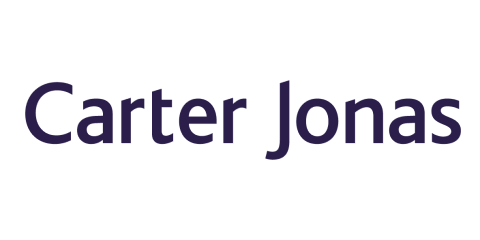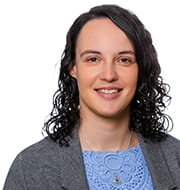How will the proposed changes to IHT (Inheritance Tax) and APR/BPR (Agricultural/Business Property Relief) rules affect the amount due if the Model Estate were to be passed down?
Inheritance tax rules for rural estates
On 30 October 2024, the Labour government’s Budget proposed changes to Inheritance Tax (IHT), including revisions to Agricultural Property Relief (APR) and Business Property Relief (BPR). From 6 April 2026, the combined value of agricultural and/or business property that an individual will be able to pass on free of IHT will be limited to £1m. Any qualifying assets valued in excess of £1m will only benefit from 50% IHT relief (20% effective tax charge). Currently, albeit subject to various conditions, qualifying agricultural and business assets are exempt from IHT.
The proposed changes allow this tax to be paid over 10 years in equal interest free instalments, rather than immediately or subject to interest, which is the case for non-relieved assets. Trusts are subject to IHT periodically and can claim both APR and BPR. From April 2026, existing trusts are expected to receive a £1m limit per trust, however new trusts set up on or after 30 October 2024 will share £1m limit across each new trust.
Proposed changes to inheritance tax rules for rural estates
Farmers and rural businesses have relied on 100% APR and BPR which, in most cases, has allowed farming businesses to pass between generations IHT-free. However, the government proposes to limit these reliefs as follows:
IHT Relief cap:
APR and BPR available on death will be capped at £1m with no transfer between spouses of any unused £1m allowance.
IHT Relief beyond the cap:
APR / BPR claimed over £1m will only benefit from 50% relief.
IHT Allowances:
The IHT nil-rate band (NRB) of £325,000 and residence nil-rate band (RNRB) of £175,000 will continue to be available and fixed at these rates until 2030.
Further detail on the proposed changes is due in summer 2025.
Implications of the IHT changes for rural estates
Under the current rules, full APR and BPR would apply to most farming assets (land, machinery, livestock etc.) leaving only the non-agricultural value of the farmhouse and chattels to be chargeable for IHT, which could be mitigated with the nil-rate bands. However, the proposed changes to APR/BPR impose a £1m cap on what were previously fully relievable assets, meaning IHT is payable on 50% of Market Value in excess of the new cap, i.e. at an effective tax rate of 20%.
The current rules mean most business assets can be inherited by the next generation to continue operating, largely without an IHT liability and, as such, without the need to generate capital on succession. As agriculture has, until recently, been a subsidised industry, many businesses operate at a return on capital often between 1-3%, which has created concern over how an IHT bill would be funded without the sale of core business assets.
Balfour planning will remain an important IHT mitigation strategy but will no longer have the full benefit it once did. The Balfour principle allowed trading businesses to fully qualify for BPR, despite undertaking minor investment activities such as letting residential property. A condition to claiming relief under Balfour is proving more than half of the business activity is trading. Previously Balfour allowed a minutia of investment assets to be treated as part of a wider trading business and therefore qualify for 100% BPR, they will now be subject to the £1m cap and 50% reduced rate of relief.
How will the IHT changes affect the Model Estate?
Applying the proposed changes to the Carter Jonas Model Estate illustrates the magnitude of the new tax rules. Prior to the Budget, succession planning was not a concern as the Estate was held in single ownership and its composition was always deemed to be comparatively favourable should an untimely death occur, especially when compared to other asset classes.
Since 2010, East Oxbury Manor has been occasionally opened to the public as a requirement for maintaining a conditional exemption tax relief granted on the owner's father’s death. Farming in-hand qualifies over 28% of the Estate’s value for APR / BPR at full Market Value, while let farms enable a further 23% of the Estate to be relieved under APR. During the 2023/24 trading year, the in-hand farm generated a trading profit of £355,000 which, compared to a rent roll of £1,334,000, would be insufficient to satisfy the “Balfour test” against the Estate as a single business. However, isolating £240,000 of rents (from let sporting, residential and commercial assets located on the in-hand farm) and collecting these through the farm account would maintain the in-hand farms overall status as a predominantly trading entity, therefore satisfying the Balfour test over a smaller part of the estate.
Below is an illustration of how the estate would have been assessed for inheritance tax on death of the sole proprietor pre- and post- budget.
Pre-Budget
| Asset | Relief (Rate) | Value |
| Total Estate | £53,920,000 | |
| Manor and Grounds | Heritage property Conditional Exemption (100%) | £7,845,000* |
| Less In-Hand Farm | APR / BPR (100%) | £15,210,000 |
| Less Let Farms Post-1st September 1995 | APR (100%) | £10,465,000 |
| Less Let Farms Pre-1st September 1995 | APR (50%) | £2,150,000 |
| Less sporting, residential and commercial rents collected through in hand farm | BPR via Balfour (100%) | £3,272,000 |
| Chargeable Estate | £14,978,000 | |
| Less NRB | £325,000 | |
| Less RNRB | N/A** | |
| Taxable Estate | £14,653,000 | |
| IHT Charged at 40% | £5,861,200*** |
*Assuming the house and grounds were the full extent of the conditional exemption and no assets were placed within a maintenance fund.
**RNRB reduced to £0 as the estate is over £2,350,000
***excluding other assets and chattels held outside the estate ownership e.g. cash, car jewellery etc.
The estate operated at an estimate inheritance tax liability of £5,861,200 (10.9% of Market Value). Post April 2026, this liability is forecast to increase to £11,450,600 (21.2% of Market Value) as shown below:
Post-Budget
| Asset | Relief (Rate) | Value |
| Total Estate | £53,920,000 | |
| Manor and Grounds | Heritage property Conditional Exemption (100%) | £7,845,000 |
| Less In-Hand Farm | APR / BPR (100%) | £1,000,000 |
| Less In-Hand Farm and Let Farms | APR (50%) | £14,487,500 |
| Less residential and commercial rents collected through in hand farm | BPR via Balfour (50%) | £1,636,000 |
| Chargeable Estate | £28,951,500 | |
| Less NRB | £325,000 | |
| Less RNRB | N/A | |
| Taxable Estate | £28,626,500 | |
| IHT Charged at 40% | £11,450,600 |
While still preferable to other asset classes, the estate-wide return on investment of 3.1% is unlikely to carry an IHT charge and continue the current regime of repairs and investment. Under this situation the estate must pay £5,001,200 within six months and commit to 10 annual interest-free annual payments of £644,940 over the next decade.
From April 2026, the owner of the Model Estate will be faced with a difficult challenge; restructure or acquiesce to a 197% increase in inheritance tax payable on death.
If restructuring, care must be taken to ensure sufficient revenue is retained for ongoing maintenance and investment as well as the needs of the family. As Balfour is not currently satisfied across the whole estate, restructuring could create opportunities to improve tax efficiency further. Where assets are gifted, consideration should be given to the risk associated with the transfer and likely tax payable if the “potentially except transfer” (PET) fails (specifically, gifts are exempt from IHT if the giver survives for seven years after gifting and reserves no benefit). Equally, understanding the relationship between IHT and Capital Gains Tax (CGT) may justify the retention of certain assets.
Recommendations
- Obtain an up-to-date valuation of all assets to understand the potential tax liability and, as part of this, draw up a comprehensive asset schedule detailing the ownership. Ensure livestock and machinery are included as they may be taxable under the new regime. Equally, note which assets (if any) are charged, who to and how much is outstanding.
- The government’s briefing confirmed that the new £1m allowance will not be transferable between spouses (unlike the NRB and RNRB). Therefore, advice should be taken to ensure that the ownership of the assets is appropriately divided between spouses, and that they have suitably sophisticated Wills in place, to enable each £1m allowance to be used on each of the deaths.
Further to the recommendations above, the following practical steps should be considered:
- Strategic Review - if assets must be disposed to generate capital their management strategy should be adjusted accordingly to enhance saleability.
- PETs / Lifetime Gifts - if the donor survives seven years, the gift may become exempt from IHT. Capital gains can often be held over on gifts of agricultural and business assets, meaning that although the gains remain capable of being brought into charge at a future date, no charge is triggered on the gift itself.
- Life Insurance - depending on the age of the donor life insurance may be available although this may be cost prohibitive. Life insurance can be a useful temporary measure to mitigate PETs / lifetime gifts.
- Spread Risk – consider who the successor(s) of the business are, and what succession was intended to look like, unfortunately succession does not always happen in the right order.
- Impact to Market Value – Where property is split such as a gift of undivided shares (or even whole parts of an estate) the loss of control can sometimes create a diminution in the wider market value of the asset.
Rural View
Our thoughts and insights on the key issues and opportunities within farming and rural businesses.




